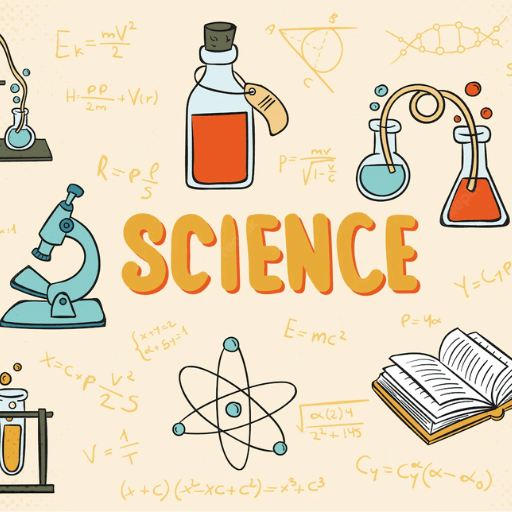Materials Around Us NCERT Solutions | Science Class 6 PDF Download
Let us play
Q1: Find the companion.Link the following words by putting arrows between words that have a connection.
 Ans:
Ans: - Iron → Lustrous
- Transparent → Glass
- Copper → Lustrous
- Solid → Wood
- Bottle → Plastic
- Opaque → Wood
Let us enhance our learning
Q1: Visit your kitchen and observe how your parents have organised various edibles. Can you suggest a better sorting method? Write it in your notebook.Ans: In the kitchen, organising edibles can be improved by grouping similar items together.
For example:
- Grains and pulses in one section.
- Spices in another section.
- Snacks and ready-to-eat items in a separate section.
- Oils and condiments in another.
Use transparent containers for easy identification and label each container for quick access.
Q2: Unscramble the letters (Column I) and match with their properties (Column II). Ans:
Ans:
- TREMAT → MATTER (b) Occupies space and has mass
- ULSBEL → SOLUBLE (d) Mixes completely in water
- TNERPASNART → TRANSPARENT (a) Objects can be seen clearly through it
- ERUSTL → LUSTRE (c) Shiny surface
So, the correct matches are:
- (i) TREMAT → (b)
- (ii) ULSBEL → (d)
- (iii) TNERPASNART → (a)
- (iv) ERUSTL → (c)
Q3: The containers which are used to store materials in shops and at home are usually transparent. Give your reasons for this.
Ans: Transparent containers are preferred for storing materials in shops and at home because:
- They allow you to see the contents without opening them.
- This makes it easier to identify and locate items quickly.
- They help in keeping things organised and accessible.
Q4: State whether the statements given below are True [T] or False [F]. Correct the False statement(s).
(i) Wood is translucent while glass is opaque.
Ans: False
Correction: Wood is opaque while glass is transparent.
(ii) Aluminium foil has lustre while an eraser does not.
Ans: True
(iii) Sugar dissolves in water whereas sawdust does not.
Ans: True
(iv) An apple is a matter because it occupies no space and has mass.
Ans: False
Correction: An apple is a matter because it occupies space and has mass.
Q5: We see chairs made up of various materials, such as wood, iron, plastic, bamboo, cement and stones. Following are some desirable properties of materials which can be used to make chairs. Which materials used to make chairs fulfil these properties the most?
(i) Hardness (does not bend or shake on sitting even after long use).
Ans: Iron, Cement
(ii) Lightweight (easy to lift or to take from one place to another).
Ans: Plastic, Bamboo
(iii) Does not feel very cold when sitting during winters.
Ans: Wood, Plastic
(iv) Can be cleaned regularly and made to look new even after long use.
Ans: Plastic, Iron
Q6: You need to have containers for the collection of (i) food waste, (ii) broken glass, and (iii) wastepaper. Which materials will you choose for containers of these types of waste? What properties of materials do you need to think of?
Ans:
(i) Food waste: Plastic or metal containers, properties to consider are durability, non-reactivity, and ease of cleaning.
(ii) Broken glass: Metal or thick plastic containers, properties to consider are strength and resistance to breakage.
(iii) Wastepaper: Cardboard or plastic containers, properties to consider are lightweight and ease of handling.
Q7: Air is all around us but does not hinder us from seeing each other. Whereas, if a wooden door comes in between, we cannot see each other. It is because air is ____ and the wooden door is ____. Choose the most appropriate option:
(i) transparent, opaque
(ii) translucent, transparent
(iii) opaque, translucent
(iv) transparent, translucent
Ans: (i) transparent, opaque
Q8: Imagine you have two mysterious materials, X and Y. When you try to press material X, it feels rigid and does not change its shape easily. On the other hand, material Y easily changes its shape when you press it. Now, when you mix both materials in water, only material X dissolves completely, while material Y remains unchanged. What can materials X and Y be? Can you identify whether material X is hard or soft? What about material Y? Justify your answer.
Ans: Material X could be salt (hard and soluble in water).
Material Y could be rubber (soft and insoluble in water).
Material X is hard because it does not change shape easily and dissolves in water.
Material Y is soft because it changes shape easily and does not dissolve in water.
Q9: (i) Who am I? Identify me on the basis of the given properties.
Ans:
(a) I have lustre. → Metal
(b) I can be easily compressed. →Sponge
(c) I am hard and soluble in water. → Salt
(d) You cannot see clearly through me. → Opaque material like wood
(e) I have mass and volume but you cannot see me. → Air
(ii) Make your own ‘Who am I?’
Ans:
(a) I am soft and insoluble in water. → Clay
(b) I am hard and have a shiny surface. → Metal
(c) I can be easily compressed and I am used for cleaning. → Sponge
Q10: You are provided with the following materials—vinegar, honey, mustard oil, water, glucose, and wheat flour. Make any two pairs of materials where one material is soluble in the other. Now, make two pairs of materials where one material remains insoluble in the other material.
Ans:
Soluble pairs:
- Vinegar and water (Vinegar dissolves completely in water)
- Glucose and water (Glucose dissolves completely in water)
Insoluble pairs:
- Mustard oil and water (Oil does not mix with water)
- Honey and mustard oil (Honey does not dissolve in oil)
Intext Question
Q1. Would it be a good idea to use paper-like materials for making cooking utensils? (Page 104)
Ans: No. Paper-like materials are not suitable for making cooking utensils. Such materials cannot withstand the high temperature of the flame and may burn. The liquid contents of the food will also soak the paper.
Q2. Are all lustrous materials metals? (Page 107)
Ans: All lustrous materials may not be metals. Some materials can be made lustrous by polishing or coating them with a thin layer of plastic, wax or any other material, which makes them look shiny.
Q3. Is water transparent? Can it be made opaque? (Page 110)
Ans: Pure water is transparent. It can be made opaque by adding some other materials to it. For example, muddy water is opaque.
Q4. Does everything you put in water disappear? (Page 111)
Ans: No. Everything we put in water does not disappear. Only the materials which are soluble in water disappear when mixed with water in a limited amount.
Q5. Are there any properties which can be shown by all materials? If yes, what are those? (Page 115)
Ans: Yes, there are some properties which are shown by all materials. All material objects possess mass and occupy space.
|
100 videos|261 docs|49 tests
|
FAQs on Materials Around Us NCERT Solutions - Science Class 6
| 1. What are the different types of materials found around us? |  |
| 2. How do we classify materials based on their physical properties? |  |
| 3. What is the difference between metals and non-metals? |  |
| 4. Why are materials important in our daily life? |  |
| 5. What role do composite materials play in modern technology? |  |




























